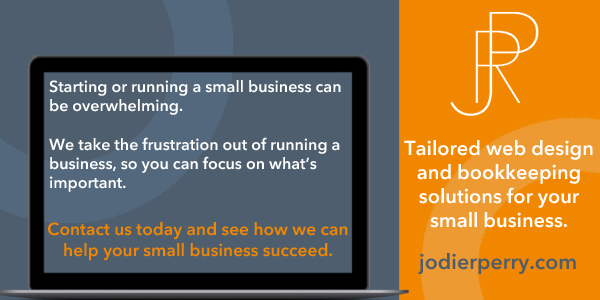This is the final post in our part time work from home jobs series, and I must say this series has made me very excited for you. I hope that I have offered you the help that I couldn’t find when I started out. It is not easy starting your own business, but you can do it.
I am not going to lie to you, starting a business takes work and perseverance. There will be days when you ask yourself, “Is this really worth it.” If you want the maximum amount of freedom, while still working, then it is worth it. Keep pursuing your dream of being successful on your own terms. Never give up.
In the first two posts in the series we talked about Prepare Before You Leap and Start a Virtual Assistant Business. Now I am going to talk about some of the practical tools you need to have in place to get started on your very own part time work from home virtual assistant business.
Some of the links in this post are affiliate links. If you purchase using one of these links, I make a small commission at no additional cost to you. This helps me keeps things free for you, and who doesn’t love free stuff. For more information, see my disclosures.
Practical Advice to Start Your Own Part Time Work from Home Jobs
1. Create a website
Imagine being in New York City. Imagine it. The ferries gliding along the Hudson River with the Statue of Liberty in the background. But you find yourself caught in one of the public areas between two buildings. There are tables around you and a water feature in corner trying to create a zen-like space in the middle of the City. You have no idea where you are. You can’t see any street signs. The landmarks of scaffolding and nondescript buildings are not familiar to you. The noise is so loud that is it drowning out your own thoughts. So much for the water feature.
What do you do? You were just trying to get to the restaurant with the amazing Korean food. So you pull out your phone and search for the website. And you get a list of results, but the names aren’t familiar to you. The restaurant you were trying to go to doesn’t have a website. Now what do you do? Well, you are in New York City, so you pick the nearest Korean restaurant, and enjoy some good food. You made it to your destination, although it wasn’t where you were headed.
I’ve read so many books on the power of story that I wanted to tell you a story to emphasize the importance of needing a website (and I like stories). You will miss many opportunities for clients if you don’t have a website. The majority of US consumers, about 84%, believe that a business is more legitimate if it has a website. And 90% search for local businesses on the internet. Gone are the days of scouring the Yellow Pages (do they have those still?).
If you need help creating a website. I am continuing to create tutorials and posting them to my Youtube channel. (I also take suggestions, so if I am missing something that will help you, send me a note). Or if you just need someone to create a website for you, I am always happy to help get you started.
2. Create a contract and determine your fees
Whether you choose to offer general admin services, web design, or accounting services. A contract is an incredibly important tool to include in your mom bag. It helps to define the relationship. Let’s face it, there will be people who will try to take advantage of the situation, and a contract will be the map that you can keep pointing to that keeps them in line.
Depending on your field of expertise, your contract should have a few essentials. This list is not exhaustive, and if you have never dealt with contracts before it may be beneficial to seek legal advice. Or to get help from an online law service like Rocket Lawyer. You can also find sample agreements on the Mom Bag page (it is only intended to give you an idea of what a contract should look like. I am not a lawyer, therefore, I am not offering legal advice.)
Your contract should include the following:
a. Date of service
b. Name of parties and what each party is called throughout the contract
For example, you would be the provider and the client would be the client.
c. Addresses of both parties
You need this if you send an invoice to a collection agency or end up in court (hopefully, that won’t happen). It is also good if you want to send a thank you note or gift.
d. Description of services
Be as detailed as possible. You don’t want to go beyond the scope of what was discussed without being compensated for it.
e. Standard procedures
This lists availability, expectation for delivery, rush deadlines and the fees associated with being rushed. Yes, you need to charge a rush fee. As a rule of thumb, a rush fee should be double your standard fee.
f. Payment for services
This details what I am charging per hour or the flat rate fee I am charging for the project. It also details any additional services beyond what is listed in the description of services. Finally, it details that the client is responsible for expenses that I incur while working on their project.
g. Always have a threshold that you won’t go below
Google your services, find the range, and then charge the mid-range if you are unsure. Remember, you are responsible for all your taxes and equipment. These need to be taken into consideration when you charge your fee.
h. Ownership of the work product
This is so important, especially if you are offering creative services. Be very clear as to who owns the product once it is complete. If ownership is transferred then you want to retain the right to use your creation in your personal and online portfolios.
i. Termination
Projects will end. Clients will be crazy. You want to make it easy to terminate an agreement for you and the client. However, be clear in this section that the client is still responsible to pay you for your work.
j. Relationship of Parties
This is one of the legalese places that you want to make sure you are clear on. You are an independent contractor not an employee. Therefore, you set your schedule (woohoo), and the client can’t tell you how to do your work or when to do it. This is my favorite part of the agreement.
k. Confidentiality
Your client expects you to keep your mouth shut, and honestly, you should. If a client can trust you, they will tell their friends, associates, and other business owners about you. Trust is a valued commodity in this business. Be a person that is trustworthy.
l. Miscellaneous
This includes a non-disparagement clause, my right to use the work for marketing purposes, indemnity, and a few other things. Here is the sample contract, so you see what I’ve included.
m. Signature lines
You both need to agree to the contract, so have a place for name, date, and signature.
3. Tell Everyone about Your Part Time Work from Home Jobs
Most of my clients are people I know, or people that recommended me to their friends. Despite all the technology we have, word of mouth is still one of the best ways to get clients. You can’t just tell people once, you need to keep reminding them of what you do. In marketing it is said that is takes 7-8 touchpoints before people buy. That means you need to tell people what you do at least 7-8 times.
You want to avoid being the annoying sales person, but you do want to keep your business before people. You can do this in person. Or on social media. Definitely, through your website. Start a blog on your website to keep your content fresh. Post to LinkedIn. Find groups in your niche. There are so many things you can do. But, remember, whatever you decide to do always provide value.
Conclusion
Are you ready to get started? Check out Part 1 and Part 2 in the series. Sign-up for the Life Unboxed newsletter that will provide you with more exclusive content to help you along the way.






















0 Comments